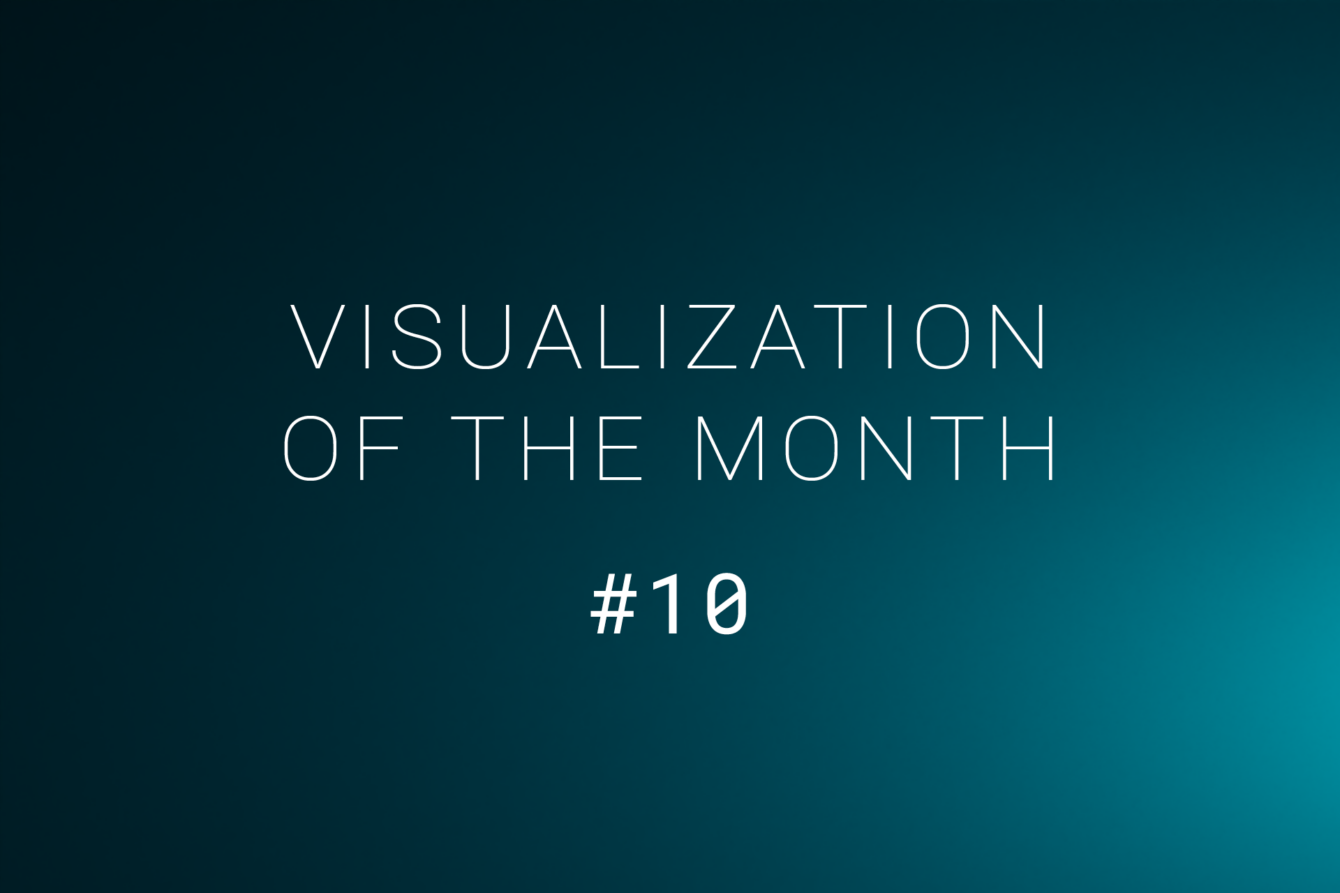VoM#10 – The Collapse of Insects
reviewed by Carolin Enzingmüller
A Visually Captivating Article by Reuters
Insects are far more than just small creatures buzzing around us. They play a crucial role in maintaining the delicate balance of our environment. Some studies indicate that multiple insect populations are dwindling, raising concerns about the impact on our planet’s biodiversity. Reuters recently published a visually captivating article titled The Collapse of Insects that we chose as our Visualization of the Month #10. It explores the situation, discussing the presumed causes behind population declines, such as habitat loss, industrial farming, and climate change. However, the issue may be more complex than what Reuters and other media outlets suggest.
Visual Nostalgia and Bionic Data Visualizations
As I first scrolled through the article, I could not help but feel a sense of nostalgia. The illustrations, created in a hand-drawn style and featuring a muted natural color scheme set against a beige background, reminded me of the nature books and field guides I had as a child. In those books, insects were portrayed as fascinating creatures, each with its own distinctive features. I recalled the countless hours I spent poring over those precious books, flipping through the pages, and marveling at the intricate details of each insect. The illustrations were not just beautiful. For me, they served as a gateway to learning about the natural world and its complexities. For a brief moment, I was transported back to a time when the world was full of wonder and the thrill of discovery.
Delving deeper into the article, infographics intend to raise readers’ awareness of the severity and magnitude of the issue at hand. A beautifully rendered diagram at the beginning of the article depicts the various species that rely on insects for food, from frogs to snakes to birds, and gives the reader a feeling for how a decline in insect populations could ultimately lead to a collapse of these food chains.
Intricately crafted data visualizations evoke associations with anatomic structures from the insect world. They showcase insects as the most diverse group of organisms on the planet, while simultaneously revealing the ambiguity surrounding their true number, which can only be approximated. Despite roughly 1 million known insect species, only about 1% of them have had their conservation status assessed, a problem that is largely attributable to funding bias. Funding for invertebrates remains drastically lower than that for vertebrates, and it may take time for the situation to improve. As a result, the vast majority of insect taxa are significantly understudied.
As human activities rapidly transform the planet, the global insect population is declining at an unprecedented rate of up to 2% per year. Amid deforestation, pesticide use, artificial light pollution and climate change, these critters are struggling https://t.co/adUC891HTb
— Reuters (@Reuters) 6. Dezember 2022
The insect apocalypse narrative
Although the illustrations are stunning and may spark feelings of nostalgia and wonder, the article heavily relies on the “insect apocalypse narrative”, which suggests that we are experiencing widespread global insect declines, with the exception of pest insects (Saunders, Janes, O’Hanlon, 2020). From a scientific perspective, this narrative has been criticized for oversimplifying complex issues and promoting sensationalized views of the situation (Simmons et al. 2019; Thomas et al. 2019).
Critics argue that there is not enough comprehensive data to support the claim that there is a widespread decline in insect populations. While there are many studies that have shown declines in specific species or regions, some argue that it is difficult to draw broad conclusions about global insect populations due to limitations in data collection and analysis. There are also some studies that have shown stable or increasing insect populations. Based on these criticisms, scientists warn that the “insect apocalypse narrative” should be viewed with caution.
Uncertainty as part of the scientific endeavor
As science communicators, we need to be mindful of the uncertainties inherent in the natural sciences. The “nature of science” is a term used by science educators to describe this aspect of scientific inquiry, which includes the recognition that scientific knowledge is provisional, subject to revision as new evidence emerges, and open to interpretation (Allchin 2011; Lederman 2007).
While the Reuters article is visually stunning and did touch on important issues, it missed a chance to delve deeper into the complexity of the scientific process and let readers take part in a more evidence-based understanding of insect conservation. Through this approach, we may be able to foster a sense of wonder and appreciation for the world of insects, while working towards more scientific knowledge building as well as conservation of these vital and fascinating creatures that I still love to admire in my old nature books.
Authors: Julia Janicki, Gloria Dickie, Simon Scarr and Jitesh Chowdhury
Illustrations: Catherine Tai
References
Allchin, D. (2011). Evaluating knowledge of the nature of (whole) science. Science Education, 95, 518–542.
Lederman, N. G. (2007). Nature of science: past, present, future. In S. Abell & N. Lederman (Hrsg.), Handbook of research on science education (S. 831–879). Mahwah: Lawrence Erlbaum.
Saunders, M. E., Janes, J. K., & O’Hanlon, J. C. (2020). Moving on from the insect apocalypse narrative: engaging with evidence-based insect conservation. BioScience, 70(1), 80-89.
Simmons, B. I., Balmford, A., Bladon, A. J., Christie, A. P., De Palma, A., Dicks, L. V., … & Finch, T. (2019). Worldwide insect declines: An important message, but interpret with caution. Ecology and evolution, 9(7), 3678-3680.
Thomas, C., Jones, T. H., & Hartley, S. E. (2019). “Insectageddon”: A call for more robust data and rigorous analyses. Global change biology, 25, 1891–1892.
About the Visualization of the Month
In our series “Visualization of the Month”, we feature an outstanding visualization on the second Wednesday of each month. One of the criteria for the selection is the extent to which it is aesthetically and emotionally appealing from a design perspective. In addition, we look at the information content. This also includes how the users of the visualization are supported in better comprehending complex contexts. The selection is made within the KielSCN team and involves expertise from the fields of information design, educational science and emotion research, as well as science communication research.



